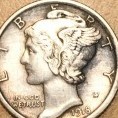Makro Multi Kruzer
-
Similar Content
-
- 83 replies
- 16,692 views
-
- 34 replies
- 5,079 views
-
- 2 replies
- 1,471 views
-
- 18 replies
- 4,354 views
-
- 25 replies
- 6,904 views
-
- 10 replies
- 3,608 views
-
-









Recommended Posts
Create an account or sign in to comment
You need to be a member in order to leave a comment
Create an account
Sign up for a new account in our community. It's easy!
Register a new accountSign in
Already have an account? Sign in here.
Sign In Now